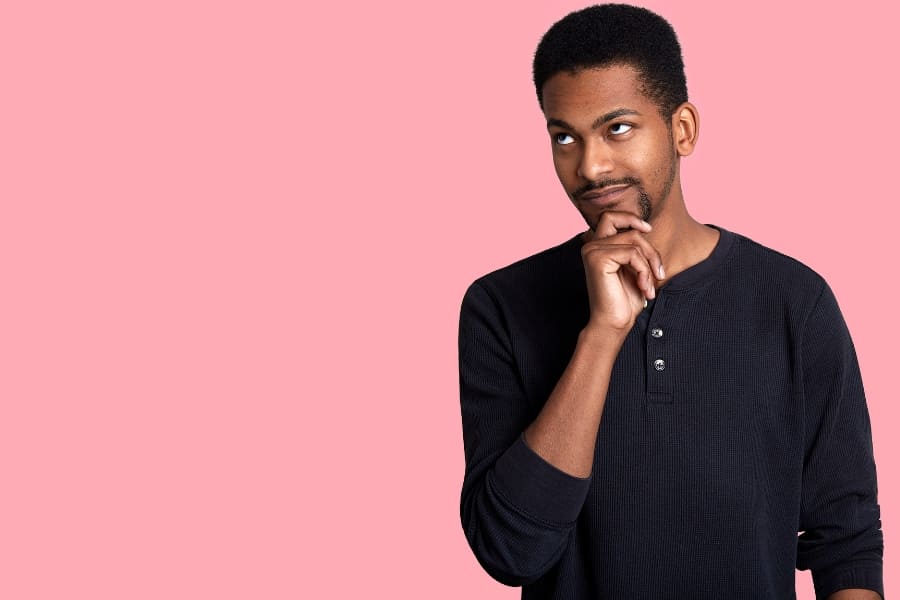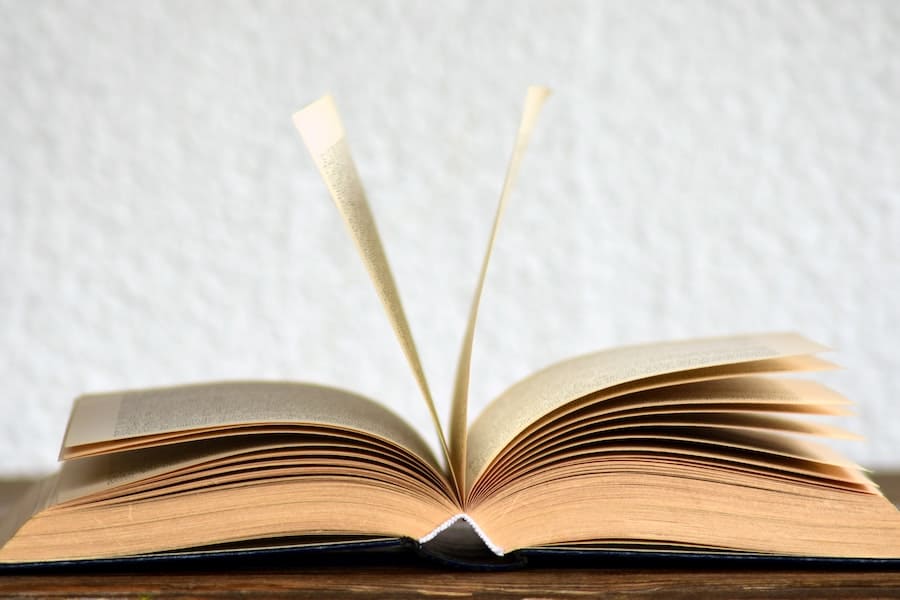You’re sitting back in your seat, munching popcorn… and then it happens. A flashback…
The scene shifts. You’re in a character’s past. In just a few minutes — perhaps even a few seconds — of vivid action, you’re gripped.
Flashbacks can be used to fill in the plot quickly and efficiently, to establish greater sympathy for a character, or even to tell a complex, multi-layered story.
So, in this article we’ll take a look at what exactly flashbacks are before running through some great flashback examples — and digging into why these work.
Ready?
Let’s begin.

What is a Flashback?
A flashback is a literary device where a story breaks away from the present narrative to delve into the past, by showing us a past event or a scene from the past.
Essentially, It’s the opposite of foreshadowing, which reveals a future event.
For instance, this narrative device lets the reader experience:
- A character’s past traumatic event,
- A backstory that conveys some pertinent background information, or
- Some relevant intrusive thoughts that distract the character from the present moment.
They can be brief or extended, and may even make up the majority of a work.
Flashback Examples in Literature Throughout the Ages

Now let’s look at some flashback examples from some notable pieces of literature:
1. “The Odyssey (Book 9)” by Homer (around 725-675 BCE)
[…] But come, I will describethe miserable journey back which Zeus
arranged for me when I returned from war.
From Troy my ships were carried by the wind
to Ismarus, land of the Cicones.
I destroyed the city there, killed the men […]
The first flashback example is from Book 9 of the Odyssey, where Odysseus dramatically describes his adventures after leaving Troy in an extended monologue to Lord Alcinous.
Odysseus continues speaking throughout Book 9 and Book 10, with the story returning to the present day of the narrative part way through Book 11, in the lines “Odysseus paused. All Phaeacians sat in silence / saying not a word, spellbound in the shadowy hall.”
2. “Wuthering Heights” by Emily Brontë (1847)
Before I came to live here, she commenced — waiting no farther invitation to her story — I was almost always at Wuthering Heights; because my mother had nursed Mr. Hindley Earnshaw, that was Hareton’s father, and I got used to playing with the children […]
Wuthering Heights begins with Lockwood, the new tenant of Thrushcross Grange, narrating in the first person.
He asks his housekeeper Nelly Dean to tell him the history of Wuthering Heights, particularly of his inhospitable landlord Heathcliff. Nelly then becomes the narrator of the past narrative — which takes up the bulk of the book.
At various points, we return to the present day before flashing back to the past again. This structure adds complexity and richness to the novel.
3. “The Catcher in the Rye” by J.D. Salinger (1951)
“I’ll just tell you about this madman stuff that happened to me around last Christmas just before I got pretty run-down and had to come out here and take it easy. […] Where I want to start telling is the day I left Pencey Prep. Pencey Prep is this school that’s in Agerstown, Pennsylvania.”
The Catcher in the Rye is framed by Holden, the main character, talking from a psychiatric hospital.
We return to this framing narrative at the end of the novel, after Holden’s narrated the experiences that led to him needing to “take it easy.”
The framing narrative gives context to Holden’s story, told in a subjective and sometimes rambling way, as he recounts his adolescent experiences.
4. “The Great Gatsby” by F. Scott Fitzgerald (1925)
One October day in nineteen-seventeen- (said Jordan Baker that afternoon, sitting up very straight on a straight chair in the tea-garden at the Plaza Hotel) — I was walking along from one place to another half on the sidewalks and half on the lawns.
In this novel, F. Scott Fitzgerald uses flashbacks to convey Gatsby’s long-running obsession with Daisy. Here, Jordan Baker tells Nick about Daisy as an 18-year-old woman in 1917, when Jordan was 16.
The flashback example is introduced quite suddenly, with a change in narrator. The details that Jordan shares give us a better picture of the love triangle between Tom, Daisy, and Gatsby.
5. “To Kill a Mockingbird” by Harper Lee (1960)
Calpurnia evidently remembered a rainy Sunday when we were both fatherless and teacherless. Left to its own devices, the class tied Eunice Ann Simpson to a chair and placed her in the furnace room. We forgot her, trooped upstairs to church, and were listening quietly to the sermon when a dreadful banging issued from the radiator pipes, persisting until someone investigated[…].
To Kill a Mockingbird is essentially one long flashback, with the older Scout narrating the events of her childhood. As a flashback, Scout recounts an incident from that time in Chapter 12, and adds a touch of humor.
Flashback Examples in Film That We All Remember
Here are some memorable flashback examples from motion pictures:
6. Forrest Gump (1994)
In the first scene of the movie, Forrest Gump tries to strike up a conversation with a lady who sits on the bench next to him: eventually, he gets a response when admiring her shoes.
As Forrest closed his eyes, remembering his first pair of shoes, we cut to a doctor’s office with young Forrest closing his eyes tightly too.
Flashbacks are used throughout the movie, with most of the story told retrospectively, with Forrest narrating.
7. The Titanic (1997)
We first see Rose as a very elderly lady, listening to a news report about items salvaged from the Titanic — including a drawing of herself as a young woman.
After a number of brief flashback scenes that Rose remembers, we go back to 1912, as she’s being interviewed about her time on the Titanic.
The bulk of the story is set in the past, but the end of the movie returns to the framing narrative in the present day.
In this clip, Rose remembers how she gave Jack’s surname when she arrived in America.
8. The Notebook (2004)
The Notebook is another example of a framing narrative.
Noah (who goes by Duke in his later years) is an elderly man, reading the titular notebook to Allie, who now has dementia, to remind her of how they fell in love. The notebook is the journal that Allie kept of their life together.
At the 1:26 point in the clip above, the story shifts from the flashback scene into the present-day narrative and we see the older Allie saying, “This is a good story […] I think I’ve read it before.”
9. Citizen Kane (1941)
Citizen Kane is famous for its rejection of a chronological narrative, but instead using different narrators to tell Kane’s life story through flashbacks while waiting to find out the significance of media mogul Charles Foster Kane’s dying word “Rosebud.”
The characters are Kane’s contemporaries, elderly and forgetful, so we’re not certain how accurate these flashbacks are.
10. Manchester by the Sea (2016)
Manchester by the Sea uses unannounced flashbacks: we don’t get the visual indications that other films often use.
The clip above is the opening scene, a flashback from the main narrative — with Lee (the film’s protagonist) and Patrick (Lee’s nephew, aged about 9 here), playing around on a small fishing boat. Right at the end of this clip, we cut abruptly to the present day.
Memorable Flashback Examples from TV Shows
Other than movies, flashbacks were also used on these noteworthy TV shows:
11. LOST (2004 – 2010)
Whether you found Lost fascinating or maddening, you probably noticed its use of flashbacks — usually accompanied by a “whoosh” sound effect.
Most episodes only feature flashbacks from one character, though there are some exceptions, and most go back to events before the plane crash.
To establish this extensive use of flashbacks, episode 1 starts with Jack Shepherd waking up after the plane crash, and later includes a flashback to him aboard the flight (seen in the clip above).
12. How I Met Your Mother (2005 – 2013)
How I Met Your Mother starts and ends each episode with Ted (Josh Radnor) telling his children, in 2013, how he met their mother.
We sometimes see the children on a couch — as in the clip above, with Ted setting up the whole series. We also hear Ted’s narration to them during the flashback scenes that are being shown: check out the 1:16 mark in the clip for an example.
As with some of the film examples, the “past” is the bulk of the story, with Ted’s narration of it to his kids forming the framing story. How I Met Your Mother also uses flashbacks within these flashbacks, particularly in Season 8.
13. The Wonder Years (1988 – 1993)
The Wonder Years tells the story of Kevin Arnold’s childhood, from the 1960s onwards — with the adult Kevin narrating in voice-over, as seen from the start of the first clip above where the adult Kevin narrates:
“I went down to the big climbing tree in Harpers Woods. I didn’t admit it to myself until years later, but in my mind was the shadow of a thought that Winnie might be there.”
14. CSI (2000 – 2015)
Montages and flashbacks are used extensively in CSI to show viewers how a crime was committed — making the scenes more interesting and compelling than simply having a description of the crime.
Flashbacks are memorably used in the 300th episode, Frame by Frame, which links a present-day case to a cold case from 14 years ago.
In this clip, Conrad’s flashback begins just after the 0:17 mark. Note how the flashback is indicated with desaturated colors, a tilted camera angle, and a slight fuzziness.
15. Grey’s Anatomy (2005 – ongoing)
In the season 8 finale of Grey’s Anatomy, a number of characters were involved in a plane crash.
The clip above is from the second episode of season 9, Remember the Time, where flashbacks from several characters are used to establish exactly what happened in the aftermath: how Mark dies, how Arizona’s leg is amputated, and more.
The preview above shows snippets of flashbacks, with a muted, blue-filtered color scheme.
What Is the Purpose of Flashbacks?
Flashbacks can be used to:
1. Support Character Development
A flashback can give us more insights into a character, by showing us their past experiences — perhaps what they’ve endured or overcome.
Forrest Gump has many examples of this type of flashback, showing Forrest’s life as a child, adolescent, and young man.
2. Incorporate Different Time Periods
Flashbacks let writers draw on different time periods, potentially contrasting social attitudes and technological developments — or alternatively showing how human nature never really changes.
3. Improve the Connection Between the Audience and the Characters
Flashbacks often serve to help the audience feel more sympathetic toward the characters or be more engaged with them.
In Lost, for instance, we feel more connected to the characters as we learn more about their lives before the plane crash.
4. Help Explain the Current Conflict
Two characters might be at odds in a story, without the reader fully understanding why. Flashbacks can fill us in on the ugly history between those characters or on the circumstances that have led them to pursue incompatible goals.
Two Types of Flashbacks
Flashbacks can be broadly divided into two types:
1. Full Flashback
Most of our examples are full flashbacks. This is where a full scene — or more — takes place in the past of the narrative. Some flashbacks are so extended that they essentially become the primary story, with the present-day narrative serving as a framing story.
2. Brief In-Scene Flashback
A brief in-scene flashback is much shorter — perhaps a few paragraphs, or even just a few lines. The short excerpt from To Kill a Mockingbird is a good example: we just get a little snippet of the past.
How Are Flashbacks Triggered?
Usually, a flashback will be triggered by the present-day narrative, perhaps through:
1. Dream Sequences
Sometimes, a flashback is presented as a dream flashback sequence: a character falls asleep and then dreams about a powerful memory. This memory might be presented with altered coloring, a camera tilt, or other visual cues.
2. Memories
Flashbacks are also commonly triggered by memories. Perhaps a character is talking about something — such as when Forrest Gump talks about shoes in the opening scene we discussed above, triggering the memory.
3. Straightforward
Often, flashbacks are triggered by a character simply reminiscing. There might be a line of dialogue like “Let me tell you about…” The opening of How I Met Your Mother is a good example of this type of trigger.
Now That You Know About Flashback Examples: Go Write Some!
Got your head around these flashback examples? Great! Now it’s your turn to embed them into your creative writing.
Whether you’re a novelist, short story writer, or screenwriter, flashbacks can be a powerful tool to reveal character, develop your plot, and construct a compelling narrative for the reader.
Need a bit more help?
Take a look at the above examples again — and look up the stories and where they come from.
Watch out for flashbacks, whether that’s a seconds-long flashback to present a brief memory, or a full framing story that starts a piece off before it flashes back to the past.












